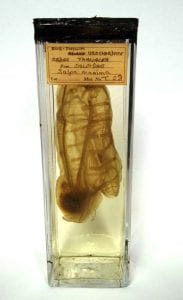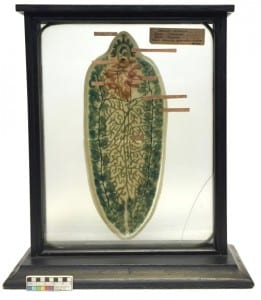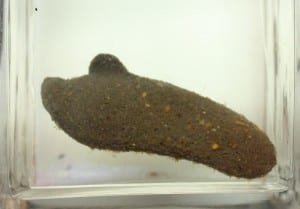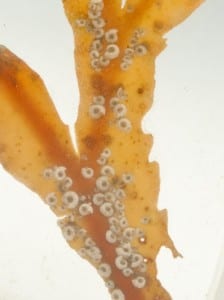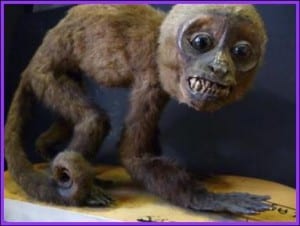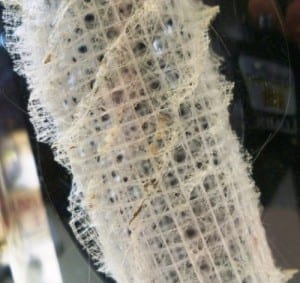Day four of my sponge exploration (I’m here for ten months as the Museum’s Artist in Residence). There’s one specimen on the shelf that I’ve been saving as a particularly special treat… it looks like an onion, it’s not sealed in a jar, and it doesn’t have a label. It’s in the glass sponge cabinet, but it doesn’t look like the other specimens. Instead, it has a grey doughy appearance, covered in small holes, and it tapers at the top into a dark red spiral. I take it back to my desk for a closer look.
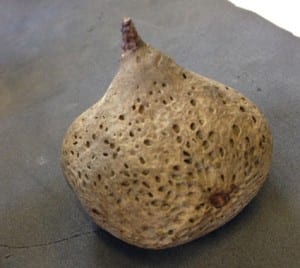
The Mystery Sponge
One of the (many) great things about spending time in the Grant Museum is that I share a room with people who not only know a lot about zoology, but also want to keep finding out more. I like to distract them from their work with questions like, ‘How do things, erm, grow?’. They are very patient. But today, I had a new question: ‘What is this oniony pointy sponge that has no label?’ Was it, perhaps, the broken base of a glass rope sponge? No – a glass sponge is too thready. Was it a fossil? No – a fossil would be heavier. Then we had a closer look at its pointy top: (more…)
Filed under Grant Museum of Zoology
Tags: Artist, Artist in Residence, detective work, documentation, Eleanor Morgan, gastropod, Glass Delusions, Invertebrates, Jack Ashby, mystery, pop culture, snail, sponges, The Blob
5 Comments »
 Close
Close


